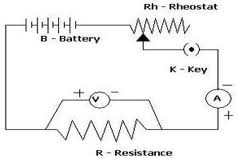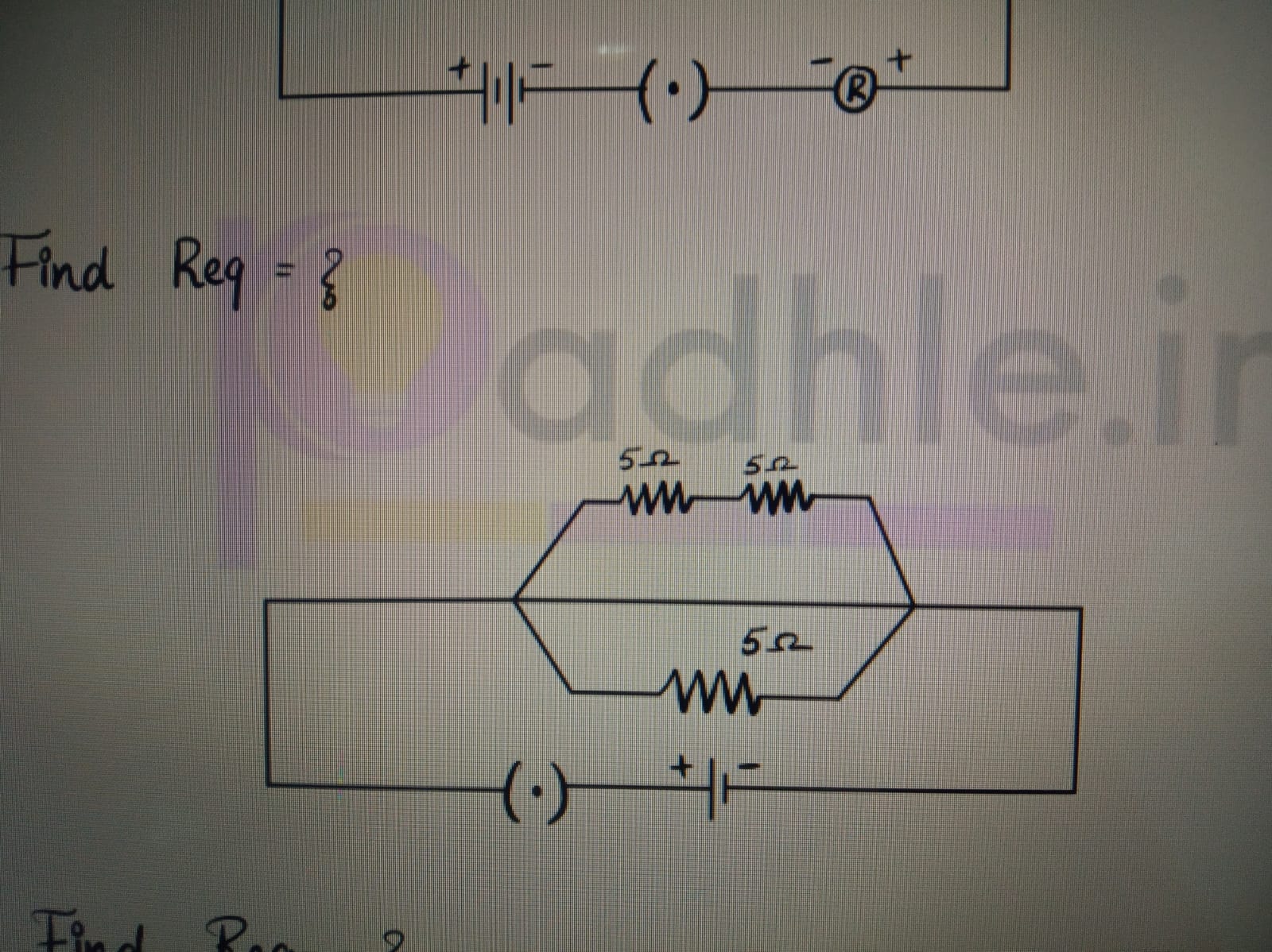CBSE Class 10 Answered
To verify this law you can set up a circuit with resistors of fixed values, a variable voltage source, a voltmeter and an ammeter as shown below in the figure
Take one resistor, connect a voltmeter parallel to it and an ammeter in series to the resistor and the voltage source. Change the voltage; take the reading from the voltmeter and the corresponding current reading from the ammeter. Plot a graph with voltages along X axis and current along Y axis. You should get a straight line of the form y = mx
Repeat the same taking different values of resistors. m will be different for different resistances. The Ohms will be verified if for each values of resistances, the V-I graph is of the form y = mx. That is a straight line passing through the origin, making an angle with the axes.














